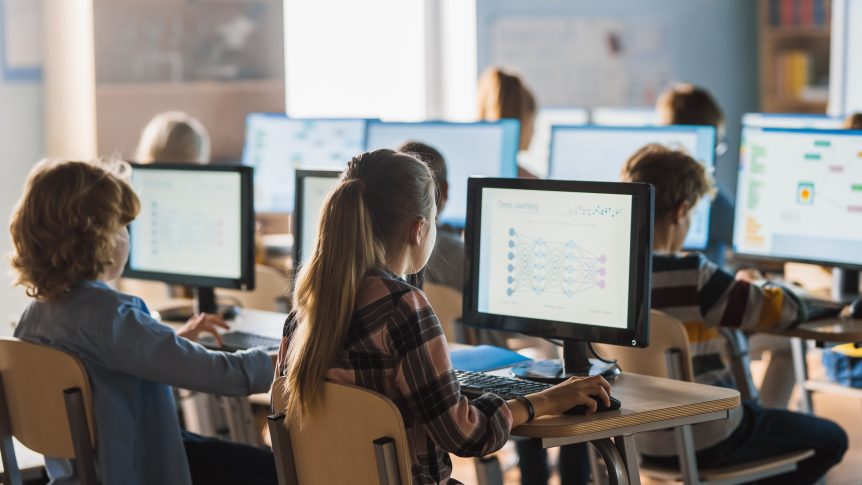Written by Donesa Walker, M.Ed. BCCS | LearningRx Shreveport
Entering the Brave New World of Automated Thought and What This Means for Learning in the Brain
Artificial Intelligence (AI) is everywhere—from classrooms to coffee shops, from the workplace to our homes. While it feels brand new, AI has been quietly shaping our world for decades. Only now, with tools like ChatGPT and other large language models (LLMs), has it become part of our daily experience.
At its core, AI is a computer program that can recognize patterns in massive amounts of data. It doesn’t “think” or “feel” like a human being. It can’t reason with empathy or create meaning from experience. But it can be a lightning-fast helper—remembering millions of details, cross-referencing information, and generating answers in seconds. Like any tool, AI has both benefits and risks, especially for young minds still learning how to think critically and independently.
The Double-Edged Sword of AI
Think of AI as you would a calculator or smartphone: it can simplify tasks, speed up processes, and even reduce stress. But unlike those tools, AI is connected to the vast, unfiltered world of the internet. That means it carries risks—from sharing personal information to spreading misinformation—unless it is used wisely and with guidance.
For students, the temptation to let AI “do the work” is strong. Writing essays, solving math problems, or answering assignments can all be outsourced to a chatbot. While this may save time, it robs students of the mental exercise that grows problem-solving skills, creativity, and independent thought. In short, AI can become a shortcut that stunts brain development if used carelessly.
Red Flags Parents Should Watch For
How can you tell if your child is leaning too heavily on AI? Here are some warning signs:
- Sudden sophistication: Schoolwork or vocabulary that far exceeds your child’s typical ability.
- Lack of explanation: They have an answer but can’t explain how they got it.
- Social withdrawal: Spending more time “chatting” with AI than with peers.
- Over-reliance: Asking AI to decide everyday choices, like what to wear or how to impress friends.
When children outsource too many decisions, they lose valuable opportunities to practice resilience, creativity, and critical thinking. Research shows that overuse of AI can hinder the very brain growth that fuels independent problem-solving and IQ development.
Keeping the Human Brain in the Driver’s Seat
Healthy use of AI begins with parental modeling and monitoring. Sit with your child, use the tool together, and show how to double-check answers against trusted sources. Encourage a “boredom cycle” for their brain—quiet moments without screens or AI—because this is when creativity expands.
Teach kids the skill of fact-checking. Just because AI produces an answer doesn’t make it true. Even professionals have been misled. In 2023, a lawyer famously submitted an AI-generated legal brief filled with fake case references. The AI had pulled examples from fictional novels, presenting them as real law. The result? He lost his case—and his professional credibility.
The lesson is simple: AI can be helpful, but it cannot be the final authority. Children (and adults) must learn to cross-check with reputable, verified sources before accepting information as fact.
The Bright Side of AI
Used responsibly, AI can be a tremendous time-saver. I often use it to check grammar, brainstorm outlines, or create parent-friendly handouts. Recently, I fed a draft of this article into an AI program and asked it to summarize key points. The result was a concise handout—useful, but still requiring my edits to make it accurate and reader-ready.
That’s the key: AI is a helper, not a driver. It works best when guided by a human brain that can sift truth from error, add context, and apply wisdom.
Bottom Line
AI is powerful and here to stay. It can make life easier, reduce stress, and even spark new ideas. But it is not a substitute for thinking, learning, or making decisions. The most important thing we can do for our children—and ourselves—is to use AI wisely: question it, verify it, and never stop adding our own thoughts.
Because in the end, it’s the human brain—not artificial intelligence—that makes meaning, builds relationships, and creates a future worth living in.








